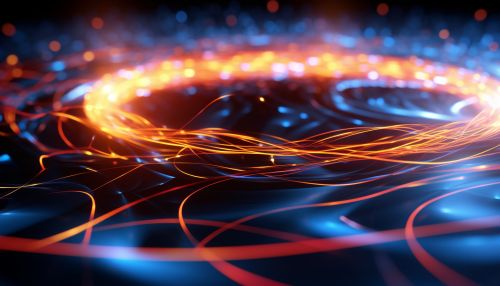Two-Photon Polymerization
Introduction
Two-photon polymerization (2PP) is a high-resolution additive manufacturing technique that utilizes the photon-based principle of nonlinear optics. This technique, which is a subset of direct laser writing (DLW), allows for the creation of complex three-dimensional (3D) structures on a nanoscale level.


Principle of Operation
The principle of operation of 2PP is based on the simultaneous absorption of two photons. This process occurs when a laser beam is focused into a volume of photoresist, a light-sensitive material. The absorption of two photons leads to an excited state of the photoresist, which then undergoes polymerization - a process of forming a polymer by reacting monomer molecules together.
Process Details
The 2PP process begins with the preparation of the photoresist. This involves mixing a monomer, a molecule that can bind chemically to other molecules to form a polymer, with a photoinitiator, a compound that absorbs light and produces a chemical species capable of initiating or catalyzing a reaction.
The next step is the exposure of the photoresist to a laser beam. The laser is focused into the volume of the photoresist using a high numerical aperture objective. The intensity of the laser beam is highest at the focal point, which is where the two-photon absorption occurs.
Following the exposure, the photoresist undergoes a development process. This involves washing away the unpolymerized photoresist, leaving behind the polymerized structure.
Applications
2PP has a wide range of applications in various fields. In microfabrication, it is used to create complex 3D structures with high precision. In biomedical engineering, it is used to fabricate scaffolds for tissue engineering and cell culture. In photonics, it is used to fabricate photonic crystals and waveguides.
Advantages and Limitations
The main advantage of 2PP is its ability to create complex 3D structures with high resolution. It also allows for the fabrication of structures with a wide range of materials, including polymers, ceramics, and metals.
However, 2PP also has its limitations. The process is time-consuming, as it involves the sequential writing of each point in the structure. It also requires a high numerical aperture objective, which limits the depth of focus and the working distance.
Future Directions
The future of 2PP lies in the development of new materials and processes that can overcome its current limitations. This includes the development of new photoresists that can absorb photons at longer wavelengths, which would allow for deeper penetration into the material. It also includes the development of new processes that can speed up the writing process, such as parallel writing techniques.
